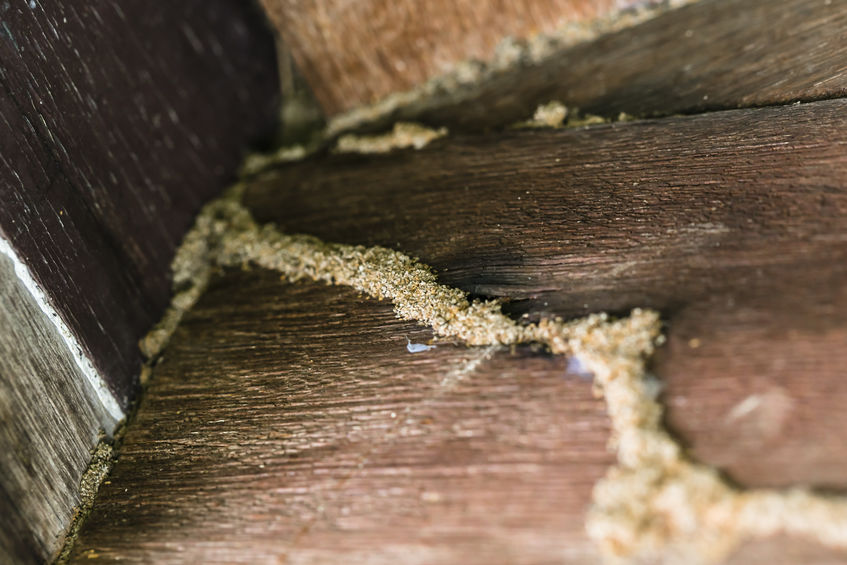Termites are the most destructive structural pests in the world, and they are widely considered to be the most difficult insect pests to control and detect within homes and buildings. Multiple species of subterranean, drywood, and dampwood termite species are known pests of structural wood in the US, and accurately identifying the species infesting a structure is essential for formulating an effective control program. Homeowners in Massachusetts do not need to identify the species of termite found in woodwork because only one termite pest species can be found in the state. This species is known as the eastern subterranean termite (Reticulitermes flavipes), and although its the only termite pest in Massachusetts, it’s also the most commonly controlled and destructive termite pest in the country.
Eastern subterranean termites live in colonies located in moist ground soil, and a single mature colony is composed of several interconnected nesting sites inhabited by at least 20,000 to as many as five million individuals. Most colony inhabitants are workers that carry out a variety of duties, such as nest construction, offspring care, feeding nestmates, and foraging. Only foraging workers infest structural wood in homes and buildings, and the damage they inflict is easy to distinguish from structural damage inflicted by other wood-infesting insect pests like carpenter ants and wood-boring beetles.
Subterranean termites constantly remain within moist soil where the relative humidity is between 97 and 100 percent, and exposure to outside air rapidly deprives the pests of their internal fluids, killing them. Due to their significant dependence on moisture in order to survive, workers only infest moist, and preferably, decaying wood. In order to reach above ground structural wood without desiccating, workers construct airtight mud tubes that protrude from the ground and connect directly to structural wood located close to the ground. Spotting mud tubes running vertically up exterior foundation walls is one of the most common signs that alert homeowners of an infestation.
Workers can infest wood with relatively low moisture content as long as they periodically use mud tubes to return to their moist ground soil habitat to hydrate as needed. Also, moisture from soil rises up mud tubes and is absorbed by structural wood, and recent studies have shown that workers use salivary reservoirs, or “water sacs”, to collect and transport soil moisture up mud tubes in order to dampen infested structural wood. This method has been shown to increase the moisture content of infested wood from 5 to 23 percent in only 36 hours, and up to 46 percent over a period of three weeks.
Do you think that the structural wood around the foundation of your home is susceptible to subterranean termite attack?

